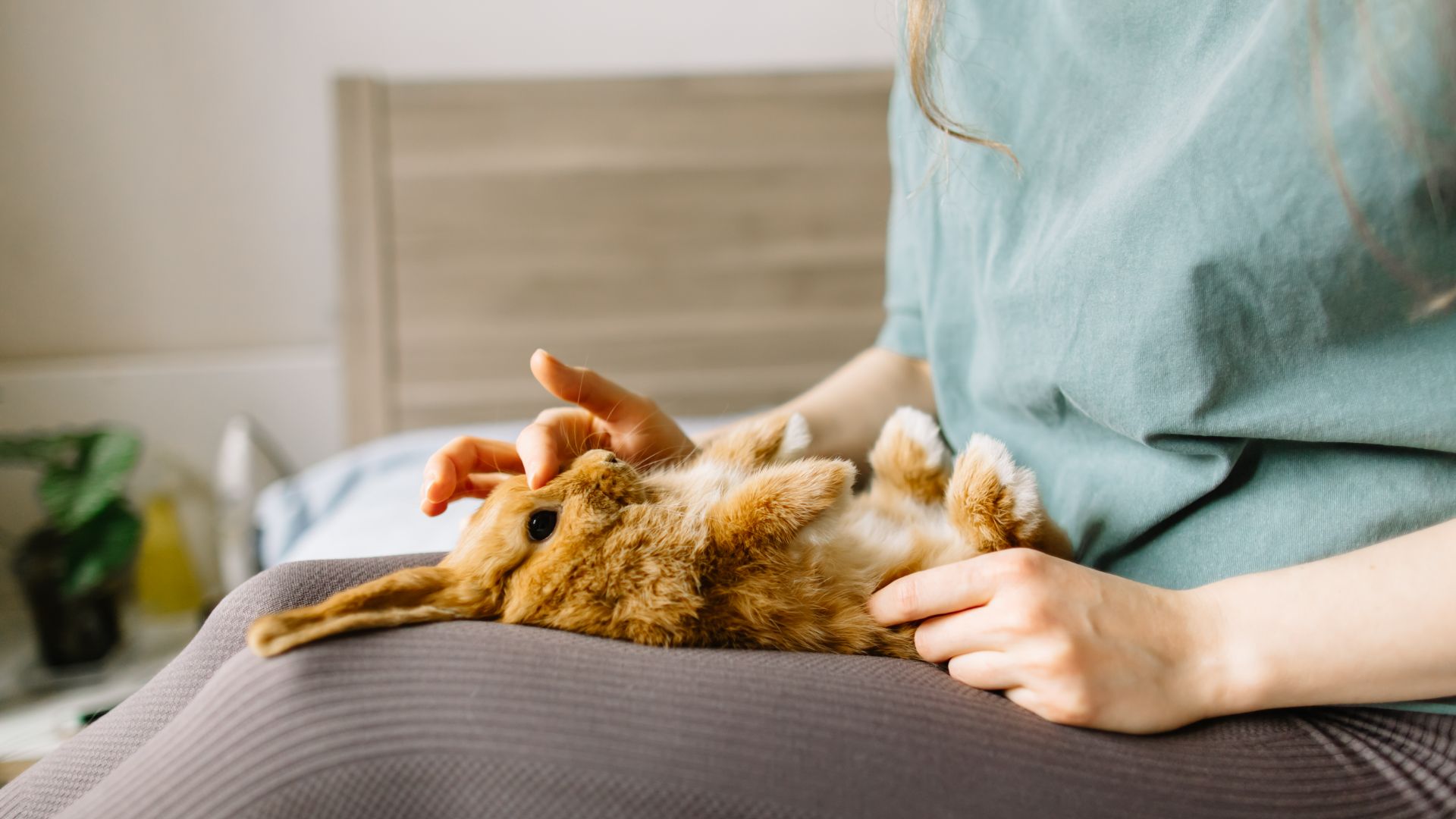
Knowing how to read a rabbit's body language is really important whether you are a new bunny parent or an experienced one. Knowing the characteristics of a content rabbit, one who may be feeling anxious or one who is unwell is key to raising a happy and healthy bunny.
A happy rabbit can be seen doing binkies around the house or chasing after one of the best rabbit toys at top speed. On the other hand, a bunny who is feeling anxious or worried, may be in a crouched position with their muscles tensed.
Knowing what your rabbit's body language is trying to tell you, can help you tune into your bunny so that you can make sure they’re always feeling their best. Knowing their own unique patterns will also alert you when something is worth getting checked over by a vet.
We've got some interesting insights from Dr. Rebecca MacMillan on rabbit body language and things to look out for.
Signs of a happy bunny

A half-twist when a rabbit jumps off the ground mid-run, is called a binky. Binkies are one of the most common behaviors of a happy bunny. While this behavior is most commonly seen in younger or more energetic rabbits, older bunnies are known to get a case of the bunny binkies, too.
Dr. MacMillan says, "Some bunnies may do a mini version of this where they just twist their head and shoulders slightly as they run... they may shake their ears, too."
She also notes that happy rabbits can be seen practicing their version of the zoomies, running in circles at high speeds. This is just one of the reasons rabbits need plenty of space so that they have the room to display these happy behaviors.
Dr. MacMillan also says, "A cheerful rabbit will also be a curious one. They will be engaging with their toys, the environment, and you. They will also have a good appetite and spend plenty of time each day happily munching their hay."
Signs of distressed rabbit

As we mentioned earlier, a worried bunny may sit in a crouched position with their muscles tensed and ears flattened. A scared or anxious rabbit may also flatten its body to the ground, with their paws under the body ready to run if need be. A rabbit that feels afraid may also try to hide away.
An angry or distressed rabbit may do a few other things, explains Dr MacMillan.
"They could try and run away, with their ears flattened and back feet flicking. Alternatively, they may hold themselves very still, with tense muscles, erect ears, and dilated pupils. Their back legs may be making loud thumping sounds on the ground."
It may be hard to imagine in your cute little bundle of fluff, but rabbits can also display signs of aggression. This could look like rabbits sitting on their hind legs in a boxing-style stance. Some rabbits may growl or even bite. You can read our on guide on rabbit biting and how to avoid it, to help navigate this behavior.
When should you worry about a rabbit's behavior?

Of course, there are also signs that your rabbit is a perfectly happy bunny but feeling unwell. Dr MacMillan says, "Unwell rabbits tend to become subdued and may be eating less. In my experience, they don’t move around as much as normal and may adopt a hunched, tucked-in position."
Different rabbit noises can indicate something is not quite right. Teeth grinding, can be a sign that your rabbit is in pain. It may also be worth reading up on how to spot five common diseases in rabbits.
If you found this feature helpful you may want to check out Why do rabbits pull fur out and how to stop them doing it.







